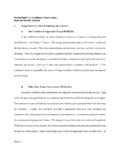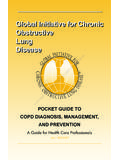Transcription of BLACK LETTER OUTLINES Torts - Westlaw
1 Tortsby Edward J. KionkaProfessor of Law EmeritusSouthern Illinois University at CarbondaleFOURTH EDITIONMat #40264726 BLACK LETTER OUTLINEST homson/West have created this publication to provide you with accurate and authoritativeinformation concerning the subject matter covered. However, this publication was not necessarilyprepared by persons licensed to practice law in a particular jurisdiction. Thomson/West are notengaged in rendering legal or other professional advice, and this publication is not a substitute for theadvice of an attorney. If you require legal or other expert advice, you should seek the services of acompetent attorney or other LETTER Seriesand BLACK LETTER Series design appearing on the front coverare trademarks registered in the Patent and Trademark Office.
2 1988, 1993 West Publishing Co. 2002 by West Group 2006 Thomson/West610 Opperman Box 64526St. Paul, MN 55164 0526800 328 9352 ISBN 13:978 0 314 15414 9 ISBN 10:0 314 15414 0 Capsule Summary ofTort Law PART ONE: INTRODUCTIONI. GENERAL CONSIDERATIONS Torts is a general classification encompassing several different civil causes ofaction providing a private remedy (usually money damages) for an injury to Pcaused by the tortious conduct of D. Each tort cause of action is separately namedand defined, each with its own rules of liability, defenses, and damages. There isno useful general definition of tort or tortious conduct.
3 Tort law is primarily judge-made law, and no American jurisdiction has yetadopted a tort code. However, tort law is being increasingly modified tort litigation, judges and juries have distinct functions. Juries decide questionsof fact, such as (1) what happened, (2) certain legal consequences of those facts( , was D negligent, was P an invitee), and (3) P s damages. Judges decideissues of law, such as (1) whether D had a duty to P and the nature and extent ofthat duty, (2) the elements of the cause of action or defense, and (3) whether1certain legal rules apply ( , can a particular statute be used to set the standardof care).
4 The judge also can decide fact issues if she determines that the evidenceoverwhelmingly favors one conclusion. The judge also applies rules of civilprocedure and evidence. PART TWO: INTENTIONAL TORTSII. LIABILITY RULES FOR INTENTIONAL TORTSA. Intent1. RuleIn tort law, conduct is intentional if the actor (a) desires to cause theconsequences of his act, or (b) believes that the consequences are certainto result from Proof of IntentD will be presumed to have intended the natural and probable conse-quences of his Intent Distinguished From MotiveIntent is the desire to cause certain immediate consequences; motive isthe actor s reason for having that desire.
5 Motive is usually irrelevant onthe issue of Intentional Conduct Distinguished From Negligent or RecklessConductIf harm is intended, the tort is intentional. If not, and D s conduct merelycreates a foreseeable risk of harm, then D s conduct is either negligent orreckless depending upon the magnitude and probability of the risk andD s consciousness of SUMMARY5. ChildrenYoung children may be found capable of intentional Torts even thoughtoo young to be capable of Mentally Incompetent PersonsIn most jurisdictions, a mentally incompetent or insane person is liablefor his intentional Torts , even when incapable of forming a purpose orunderstanding the consequences of his Transferred IntentD s intent to commit any one of the original trespass-based Torts (assault,battery, false imprisonment, trespass to land or chattels) automaticallysupplies the intent for any of the other four.
6 It also transfers from X (D sintended victim) to P (D s actual but unintended victim).8. Scope of Liability (Proximate Cause)Broader scope of liability rules apply to intentional Battery1. RuleBattery is a harmful or offensive contact (direct or indirect) with P sperson, caused by D, with the required intent. D must have actedintending to cause a harmful or offensive contact with P (or another), oran apprehension of such a P s PersonP s person includes his body and those things in contact with it orclosely associated with P s AwarenessP need not have been aware of the contact at the SUMMARY34. No Harm IntendedD need only have intended the contact.
7 It does not matter that Dintended no harm or Harmful or Offensive ContactA harmful contact is one which produces bodily harm. An offensivecontact is one which offends a reasonable sense of personal dignity, as bybeing hostile, insulting, loathsome, or unduly ConsentIf P consents to the contact, D is privileged to make it and there is no Assault1. RuleAssault is an act by D, done with the required intent, which arouses inP a reasonable apprehension of an imminent battery. D must have actedintending to cause a harmful or offensive contact with P (or another), orto cause an imminent apprehension of such a ApprehensionP must have been aware of D s threatening act at the time, before it isterminated.
8 Apprehension is all that is required; P need not be afraid. IfD s assault is directed against P, D is subject to liability even though P sapprehension is assault may occur even when D s act is directed against a thirdperson, or when it is apparent to P that D intended only an assault,provided P reasonably perceives the threat of a battery to ImminentThe contact must be perceived as imminent. There must be an apparentintent and apparent present ability to carry out the threat SUMMARYMere words, unaccompanied by a physical act, are not an assault. Butwords may give meaning to movement. A conditional threat may be anassault, unless D is privileged to enforce the False Imprisonment1.
9 RuleFalse imprisonment occurs when D, intending to confine P (or another)within boundaries fixed by D, so confines P, and P is conscious of theconfinement or is harmed by IntentThe requisite intent is merely the intent to confine. A mistake of identityis no excuse, nor is a good faith belief that the confinement is ConfinementConfinement occurs when P is prevented from leaving a given area, evenwhen that area is relatively large. The confinement must be complete,and P must have no reasonable or safe exit or escape known to him. Theconfinement may be by means of actual or apparent physical barriers,physical force, or credible threats of physical force, or duress sufficient tovitiate P s consent, as where D threatens to harm another or P s valuableproperty, or restrains such property.
10 However, merely moral or socialpressure is not sufficient. Refusal to release from a once-valid confine-ment is also by color of legal authority is sometimes called false D has or purports to have legal authority to take P into custody,exercises it, P believes that D has or may have such authority, and Psubmits against his will, there is confinement. P must be aware of theconfinement, unless P suffers physical harm from ShopliftersShopkeepers may have a privilege to detain persons suspected ofshoplifting for a reasonable time for the purpose of conducting SUMMARY55. AccessoriesTo be liable for false imprisonment, D must have been an active andknowing participant in procuring or instigating the confinement, includ-ing its wrongful Intentional or Reckless Infliction of Emotional Distress1.








